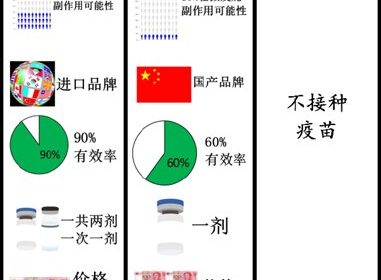Linking health codes to COVID-19 vaccination status may improve uptake

As the world approaches the end of the second year of the COVID-19 epidemic, vaccine distribution and uptake remains a challenge.
Dr. Stephen Pan, from the Department of Health and Environmental Science at Xi’an Jiaotong-Liverpool University, led a team to investigate if linking COVID-19 vaccination status to health code color in China would increase willingness to vaccinate.
“The pandemic has affected the whole world, and vaccinations are one of the most promising ways to get back to some semblance of normal. But in China, like other places, there is still a large number of people who are hesitant about getting vaccinated,” says Dr. Pan.
According to a national survey conducted by Peking University earlier this year, a third of people were unwilling to get the vaccine. Dr. Pan’s research, conducted online among a group of 873 people, found similar hesitancy rates, at 29.78%.
Health codes in China are one of the methods employed to control the epidemic—when a user has been to a medium- or high-risk area or reports feeling flu-like symptoms, their code changes from green to yellow or red.
A green code is necessary for admission into many public facilities, such as shopping centers, subways and tourist areas. Thus, linking health code color to vaccination status would mean unvaccinated individuals could be barred from entering many public spaces.
Code red
Using a discrete choice experiment, Dr. Pan and his team explored whether linking health code color to vaccination status might increase willingness to vaccinate.
Participants were shown several hypothetical vaccination scenarios (including factors such as cost of the vaccine, effectiveness, probability of side effects and number of doses) and asked whether they would vaccinate. In half of the hypothetical scenarios, refusal to vaccinate would cause one’s health code color to turn yellow. However, in the other half of scenarios, refusing to vaccinate had no impact on one’s health code color.
Among vaccine hesitators, in the scenario of a free, domestic vaccine, administered in two doses at a hospital, with 10% chance of side effects and 80% effectiveness, the probability of choosing “would not vaccinate” was 17.34% when refusing to vaccinate had no impact on one’s health code color. The probability of choosing “would not vaccinate” dropped to 8.61% when refusal to vaccinate caused one’s health code color to turn yellow.
However, the willingness to vaccinate only grew marginally if the vaccine was perceived as less effective (below 60%), even if non-vaccination would affect recipients’ ability to travel freely in public.
“One reason for this could be concerns about potential side effects. Almost half of participants expressed uncertainty or concern about vaccine safety, so willingness to vaccinate may be lower if the vaccine is perceived as not very effective.”
Easy access
While using health code color to encourage vaccine uptake could be effective, Dr. Pan says it’s essential to carefully consider the implementation.
“For example, some individuals will have legitimate medical conditions that make them ineligible for the COVID-19 vaccine. It will be important to have clear exemption policies in place before such vaccine mandates are implemented.
“In addition, strict mandates may be able to help increase willingness to vaccinate for COVID-19 in the short term, but we don’t know how such policies will impact willingness to cooperate with future public health initiatives,” he says.
For this reason, he explains, policymakers should be careful when considering measures such as these, to avoid damaging public trust.
“The main question is, how do we encourage more eligible people to vaccinate for COVID-19? There are lots of different approaches and incentives. Linking individual health code color to vaccination status may be an effective and rapidly scalable approach, but it’s best to have a number of different possible interventions ready—this is just one.”
Source: Read Full Article
